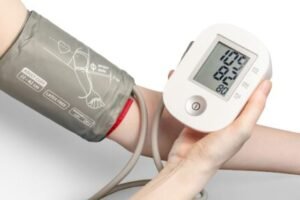Medically reviewed by Dr. Ramesh Gaddam, M.D. — Written by Sumalatha, D.N.H.E
Cardiovascular diseases (CVDs) are a group of conditions that affect the heart and blood vessels, including coronary artery disease, heart failure, stroke, and high blood pressure. These diseases are a leading cause of death worldwide and pose a significant burden on healthcare systems. Understanding the causes, risk factors, symptoms, and management of CVDs is crucial for prevention and effective treatment.
Types of Cardiovascular Diseases
There are various types of Cardiovascular Diseases:

Coronary Artery Disease (CAD):
CAD is the most common type of heart disease and is caused by the buildup of plaque in the coronary arteries, which supply blood to the heart muscle.
This can lead to angina (chest pain) or heart attacks.
Heart Failure:
Heart failure occurs when the heart cannot pump blood effectively, leading to insufficient blood flow to meet the body’s needs.
It can result from various conditions, including CAD, hypertension, and myocardial infarction.
Hypertension (High Blood Pressure):
Persistent elevated blood pressure can damage blood vessels and organs over time, increasing the risk of heart disease, stroke, and other complications.
Stroke:
A stroke occurs when blood flow to a part of the brain is interrupted, either due to a clot (ischemic stroke) or bleeding (hemorrhagic stroke).
Hypertension is a major risk factor for strokes.
Peripheral Artery Disease (PAD):
PAD is a condition where there is a buildup of plaque in the arteries that supply blood to the limbs, usually the legs.
This can lead to pain, cramping, and reduced blood flow.
Arrhythmias:
Arrhythmias are irregular heartbeats, which can be too fast (tachycardia), too slow (bradycardia), or irregular.
They can be caused by various factors, including heart disease, high blood pressure, and diabetes.
Valvular Heart Diseases:
These involve abnormalities in the heart valves, which can affect blood flow through the heart chambers.
Cardiomyopathies:
These are diseases that affect the heart muscle, leading to changes in its structure and function.
Causes of Cardiovascular Diseases
Cardiovascular diseases (CVDs) encompass a range of conditions affecting the heart and blood vessels.
Several factors contribute to their development, including:

Unhealthy Diet
Diets high in saturated fats, trans fats, cholesterol, and sodium can contribute to high blood pressure, obesity, and atherosclerosis (hardening of the arteries), which are major risk factors for CVDs.
Physical Inactivity
Lack of regular physical activity is a significant risk factor for developing CVDs.
Exercise helps control weight, lower blood pressure, and improve cholesterol levels.
Smoking
Tobacco smoke contains chemicals that can damage blood vessels and heart tissues, leading to atherosclerosis.
Smoking also reduces the amount of oxygen in the blood, putting extra strain on the heart.
High Blood Pressure (Hypertension)
When blood pressure is consistently high, it damages artery walls and increases the risk of heart disease, stroke, and other complications.
High Cholesterol
Elevated levels of cholesterol, particularly LDL cholesterol (“bad” cholesterol), can lead to the formation of plaques in the arteries, narrowing them and restricting blood flow.
Diabetes
Diabetes increases the risk of cardiovascular diseases.
High blood sugar levels can damage blood vessels and nerves that control the heart, leading to complications like heart disease and stroke.
Obesity
Excess body weight, particularly around the waist, increases the risk of developing conditions like high blood pressure, high cholesterol, and diabetes, all of which contribute to CVDs.
Family History
Genetics play a significant role in cardiovascular health.
If close relatives have had heart disease or stroke, it increases an individual’s risk.
Stress
Chronic stress can contribute to high blood pressure, unhealthy coping mechanisms like overeating or smoking, and other behaviors that increase the risk of CVDs.
Age
The risk of cardiovascular diseases increases with age. Men over 45 and women over 55 are at higher risk.
Gender
Men are generally at higher risk for heart disease at an earlier age, but the risk for women increases after menopause.
Sleep Apnea
This condition, characterized by interrupted breathing during sleep, is linked to an increased risk of high blood pressure, heart attack, and stroke.
Excessive Alcohol Consumption
Drinking too much alcohol can raise blood pressure, contribute to obesity, and increase the risk of heart failure and stroke.
Symptoms of Cardiovascular Diseases
The symptoms of cardiovascular diseases (CVDs) can vary depending on the specific condition.
Here are some common symptoms associated with various cardiovascular conditions:

Chest Pain or Discomfort
This is one of the most common symptoms of heart-related problems.
It may feel like pressure, tightness, squeezing, or aching in the chest area. It can also radiate to the arms, back, neck, jaw, or stomach.
Shortness of Breath
Difficulty breathing or feeling short of breath, especially during physical activity or at rest, can be a sign of heart failure, heart attack, or other heart conditions.
Palpitations
Irregular heartbeats or a sensation of rapid, fluttering, or pounding heartbeats can occur with various heart conditions, including arrhythmias.
Dizziness or Lightheadedness
Feeling dizzy or lightheaded can be a symptom of several heart conditions, including arrhythmias, heart valve problems, or heart attack.
Fatigue
Unexplained fatigue or weakness, especially if it’s severe or persistent, can be a symptom of heart failure or other heart-related issues.
Swelling
Swelling in the legs, ankles, feet, or abdomen can be a sign of heart failure, as the heart may not be pumping blood effectively.
Nausea or Vomiting
Some people may experience nausea, vomiting, indigestion, or stomach pain during a heart attack or other heart-related events.
Sweating
Profuse sweating, especially without exertion or in combination with other symptoms, can be a sign of heart attack.
Jaw, Neck, or Back Pain
Pain in the jaw, neck, or back can sometimes be a symptom of heart problems, particularly in women.
Fainting or Loss of Consciousness
This can occur with various heart conditions, including arrhythmias, as the heart’s irregular rhythm may cause a drop in blood pressure.
Cold Sweat
A sudden, cold sweat, particularly if it’s accompanied by other symptoms, can be a sign of a heart attack.
Medically reviewed by Dr. Ramesh Gaddam, M.D.

General Physician, Diabetologist, and Critical Care Specialist.
Discover more from Health Build-Up
Subscribe to get the latest posts sent to your email.



Pingback: Pneumonia: 10 Tips for Managing Pneumonia
Pingback: Lahsun (Garlic) Benefits, Nutrition, Side Effects, Uses
Pingback: Panic Attack in Sleep : Symptoms, Causes, (6 Best Solutions)
Pingback: Sapota(Chikoo): Nutrition, Risks, Uses [12 Rich Benefits]
Pingback: Kamrakh (Star Fruit) Nutrition, Uses, Risks, 9 top Benefits
Pingback: Green Mediterranean Diet: Benefits, Side Effects, Diet Plans
Pingback: Morbid Obesity: Causes, Symptoms, Treatment and Prevention
Pingback: Myocardial Ischemia: Causes, Symptoms, Treatment
Pingback: Turmeric Milk Benefits
Pingback: The Impact of Stress on Testosterone Levels – (10 Best Tips)
Pingback: Intermittent fasting (IF): Benefits, Plans, Diet & Safety
Pingback: The Anti Inflammatory Diet, Benefits and 12 Action Plans
Pingback: Legumes vs Beans: Types, Benefits, Nutrition, Side Effects
Pingback: Safflower Oil: Benefits, Nutrition, Uses, Side Effects
Pingback: Rajma (Red Kidney Beans): Benefits, Nutrition, Side Effects
Pingback: Orthopnea: Shortness of Breath at Night when Lying Down
Pingback: Banana Chips: Calories, Types, Health Benefits, Side Effects
Pingback: 13 Essential Vitamins: Health Benefits & Dietary Sources
Pingback: Fatty Liver Disease (AFLD, NFLD): Causes, 8 Signs, Treatment
Pingback: Angina: Symptoms, Causes, Types, Risk Factors, Diet, Avoid
Pingback: 18 Super Benefits of Insulin Plant for Diabetes and Health
Pingback: Tips to Lose Belly Fat: Trim the Waist (9 Real Tricks)
Pingback: 8 Best Upper Arm Blood Pressure Monitors (Cuff & Wireless)
Pingback: Phool Makhana (Fox Nut or Lotus Seed) Calories & 12 Benefits
Pingback: 5 Symptoms of Prediabetes (Causes, Prevention & Diet)
Pingback: 12 Powerful Benefits of Drumstick Seeds (Moringa)